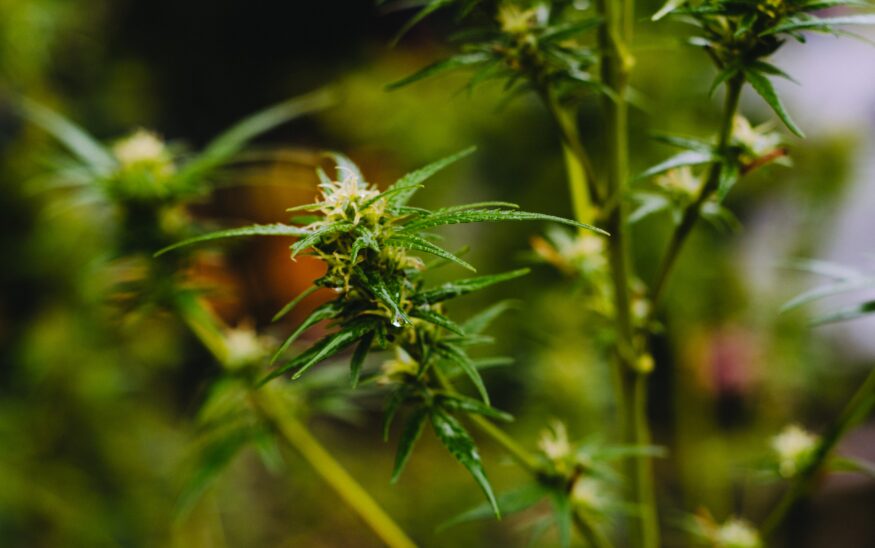What to Do About the Impact of Marijuana on Real Estate in Colorado
Presently, marijuana consumes 3 percent to 4 percent of all industrial space in the metro area
Glen Weinberg //March 13, 2018//


What to Do About the Impact of Marijuana on Real Estate in Colorado
Presently, marijuana consumes 3 percent to 4 percent of all industrial space in the metro area
Glen Weinberg //March 13, 2018//

Attorney General Jeff Sessions is rescinding the Obama-era policy that had paved the way for legalized marijuana to flourish in states across the country. In a break from past federal policies taking a hands-off approach, Sessions will instead let federal prosecutors – where pot is legal – decide how aggressively to enforce federal marijuana law. How will this impact marijuana real estate in Colorado and the overall health of the commercial market?
First, what does this change in tone from the federal government really mean?
I don't think the announcement changes much regarding enforcement priorities. The Federal government has a hard-enough time figuring out how to keep itself open. Federal prosecutors have their hands full already; it is unlikely they will muddy the waters going after legal marijuana producers. It does make me wonder about the recent shutdown of one of the largest marijuana shops (Sweet Leaf) for looping – when a customer goes in multiple times to buy marijuana; you can only sell a certain amount to each customer, so selling to the same customer twice is illegal. This action does make you wonder if the federal government is exerting its influence on enforcement of marijuana laws.
Before talking about the actual impact on Colorado commercial real estate, it is important to quantify what impact marijuana currently has on the overall commercial market. Marijuana-related properties occupied around 4.2 million square feet of commercial space as of the beginning of 2017, out of a total of 145 million square feet. In essence, marijuana consumers 3 percent to 4 percent of all industrial space in the metro area: this number is higher when you factor in various support businesses (lights, packaging, testing, etc.)
While 3 percent to 4 percent is not a huge percentage of the total industrial space, I would guess marijuana consumes about 40 percent of a particular type of industrial space: Industrial space is put into groups (class A through D). Just like you would guess, class A is the nicest while class D is the least desirable. Marijuana grows have been gobbling up space primarily in classes C and D. Properties in the lower industrial tiers are older buildings, have lower ceiling heights, and are less desirable than their higher rated counterparts.
Why are certain industrial properties more desirable for this function? Marijuana is a unique industrial use. These tenants typically look for lower ceilings, lots of power, and don't need beautifully designed building. This has made class C/D properties very desirable for the industry.
If the federal government takes large enforcement action against the industry, commercial real estate will no doubt be impacted.
The hardest hit properties will be these class C/D commercial properties where marijuana consumes the largest percentage.
I'm doubtful there will be much change in enforcement priorities from the federal government. There is no going back in marijuana regulation; if anything, more states are leaning toward more relaxed policies on the substance. Furthermore, the revenue generated from marijuana is a drug unto itself for various tax jurisdictions. Nobody will give up the tax revenue without a fight.
The real threat to the industry is the changing market.
Two factors are converging that will alter the cost effectiveness of growing indoors in large metro markets like Denver. First, more supply is coming online both in Colorado and throughout the country. As supply increases, prices will, no doubt, fall. Along with increasing supply, the industry is beginning to migrate to lower cost areas like southwest Colorado, where they can grow in greenhouses for considerably less than in warehouses. These two factors will converge to drive prices down and the cost effectiveness of large indoor city grows becomes questionable.
WHAT SHOULD YOU DO?
As I've mentioned since the industry's beginnings, investors need to focus on general purpose functional properties. The intense focus of marijuana on class C/D properties is problematic. The intense focus of marijuana on class C/D properties is problematic. As the industry transforms because of market forces and the risk of federal legislation and enforcement, these properties are most at risk. There is little to no demand for class C/D properties that are dysfunctional with low ceiling heights. As with any real estate transaction, the more generic a building, is the larger your audience of prospective tenants/buyers. For many marijuana properties, they are no longer generic, and therefore property owners will have issues when tenants leave.
The marijuana industry is changing rapidly.
As the actor Jimmy Dean noted:
Now is the time to adjust your sails and focus on general purpose properties so you can weather the storm, whichever way the wind blows.


























